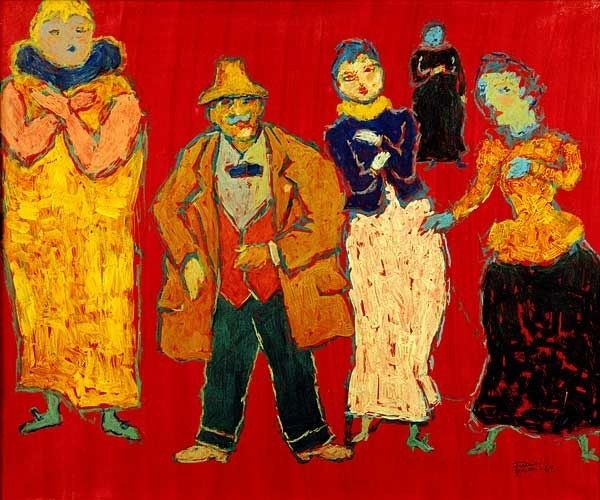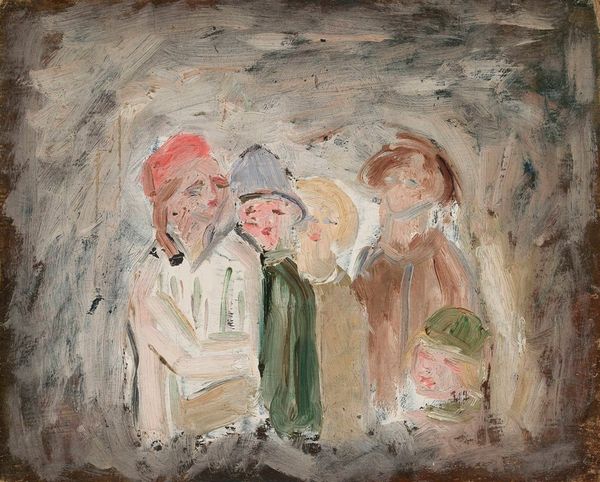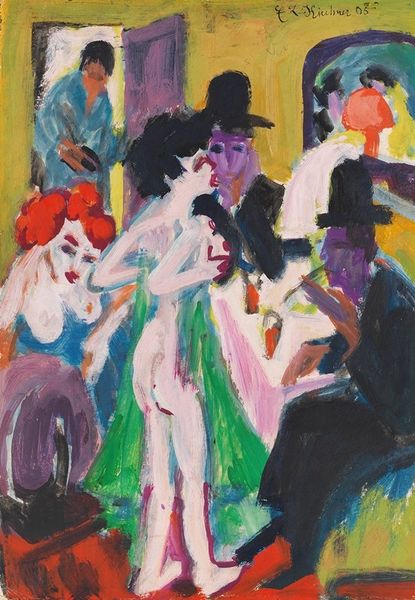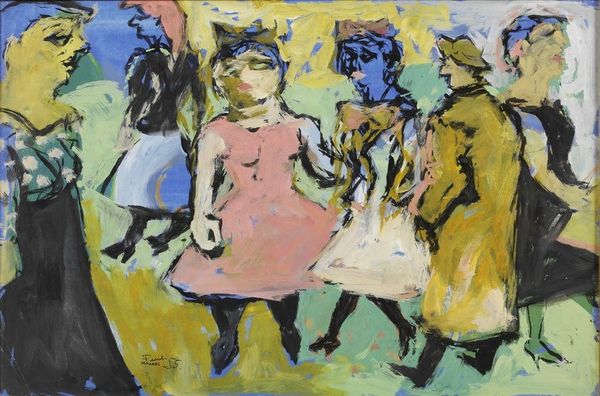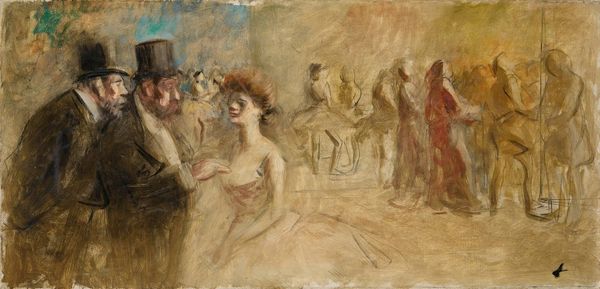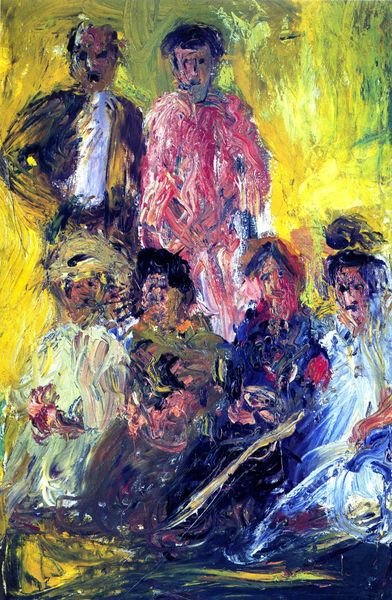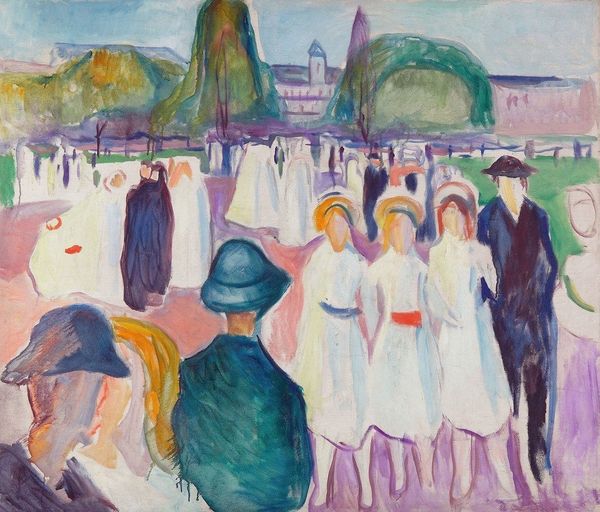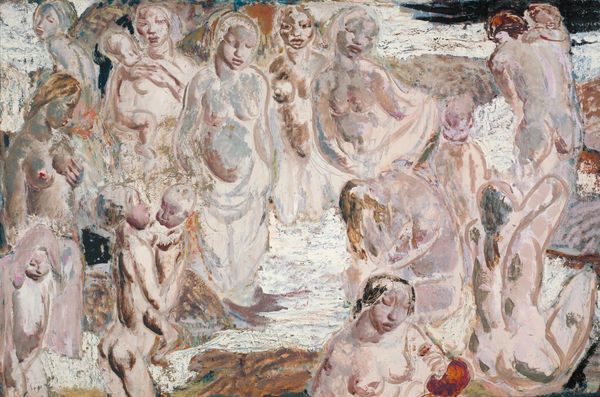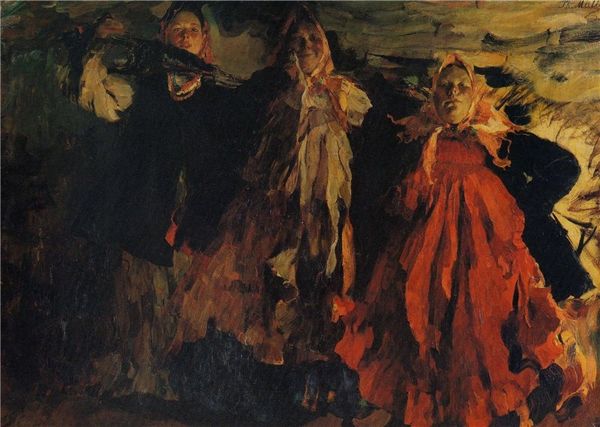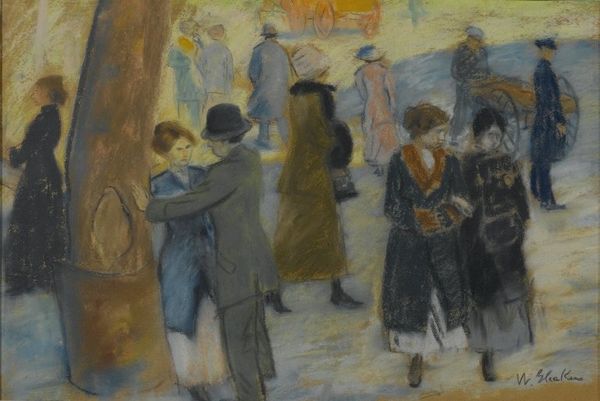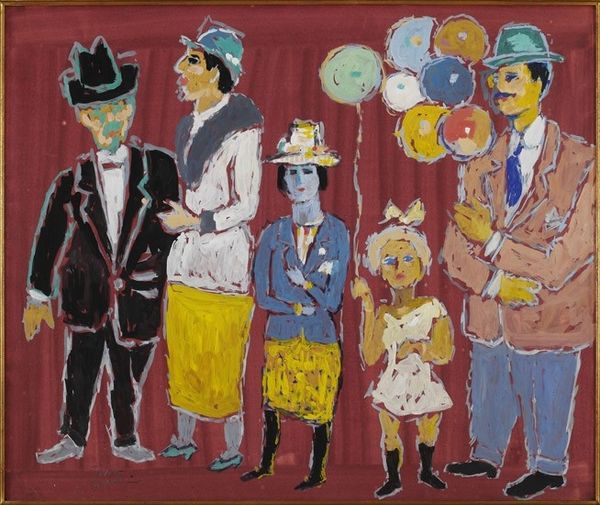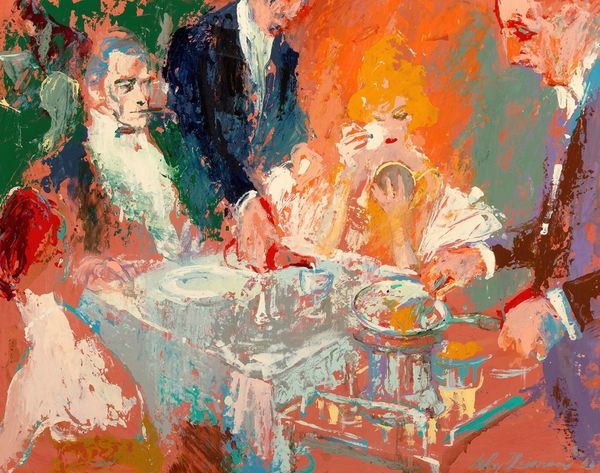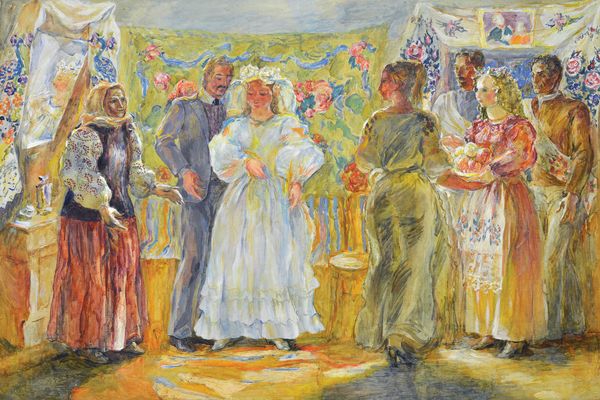
painting, oil-paint
#
figurative
#
painting
#
oil-paint
#
figuration
#
oil painting
#
group-portraits
#
expressionism
#
genre-painting
Copyright: Public Domain: Artvee
Curator: Looking at "Wedding Procession in Front of a Church," painted in 1921 by Tadeusz Makowski, what strikes you first? Editor: There's an undeniable sense of anxiety in this seemingly joyful occasion. The muted palette and almost spectral figures create an eerie atmosphere. Curator: Indeed. It seems Makowski employed a deliberately simplified, almost childlike figuration here, echoing perhaps the naivete of new beginnings, or maybe commenting on the roles assigned within the marriage institution itself. Look at the blurred faces, as if identity is being dissolved. Editor: I agree, and notice how the architectural structure behind them seems to loom as a cold backdrop. It raises questions about societal pressures present during the interwar years in Poland, particularly the role the church held in people's lives. Curator: Absolutely. Makowski uses the church as a solid, unwavering witness, a symbol of continuity, even if the individuals within the scene seem ephemeral and perhaps a little lost in its shadow. Editor: Also consider the choice of oil paint itself, allowing for such translucent layers. He builds depth through suggestion rather than definition, mirroring, I think, the uncertain future awaiting the couple. It’s as if their destinies are painted in a state of flux. Curator: It’s fascinating to me that Makowski gives so much presence to the idea of ‘wedding’ but so little concrete reality to those within the procession. They are shapes, suggestions, more archetype than individual. Consider how that collapses centuries of expectations onto a single canvas. Editor: And challenges them, perhaps? By not solidifying these figures, Makowski pushes us to interrogate these traditional events rather than accept them passively. The painting functions, then, as more than just a pretty picture but rather an exercise in cultural critique. Curator: A powerful statement, executed with a seemingly gentle touch. This little genre-painting invites, then, more than meets the eye in an aesthetic or cultural analysis. Editor: Well, seeing through your iconographic lens truly changed how I look at this piece; I appreciate how historical contexts give new meaning to forms and symbolism. Thank you for expanding on that, and thank you all for joining us.
Comments
No comments
Be the first to comment and join the conversation on the ultimate creative platform.
